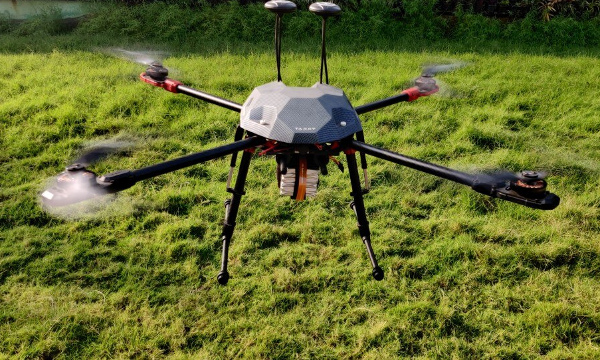IIT Madras researchers have developed an AI-powered drone that can help armed forces and security agencies detect and hack into rogue drones. The drone system developed by Indian Institute of Technology Madras’ researchers will prove to be invaluable to law enforcement agencies, security services and armed forces as it will allow them to secure air space over critical civilian and military installations from surveillance by rogue drones.
The AI drone by IIT Madras can track down rogue drones visually, hack into their GPS navigation system, following which the target drone is forced to change its flight path or land safely.
Why is such an AI drone system important for us?
A major advantage of this artificial intelligence-operated drone system is that it can be controlled over the Internet and can navigate autonomously as compared to most existing drones that operate on ‘line of sight’ meaning the operator must keep the drone within their sight.
Using the Internet to control the drones also allows for deploying a swarm of drones that can intelligently detect and track people, drones, vehicles and other objects.
Who designed the AI-based drones from IIT Madras?
This new drone system was designed by a team comprising Vasu Gupta, a final year BTech student, Department of Aerospace Engineering, IIT Madras, and Rishabh Vashistha, a Project Associate working in RAFT Lab, Department of Aerospace Engineering, IIT Madras.
The research team was mentored by Dr. Ranjith Mohan, Assistant Professor, Department of Aerospace Engineering, IIT Madras.
What is the future of this IIT Madras-developed drone system for law enforcement in India?
“Our current drone prototype is equipped to detect and track objects visually, precisely land and flying objects over the Internet,” said Dr. Ranjith Mohan, Assistant Professor, Department of Aerospace Engineering, IIT Madras, highlighting the unique aspects of this system.
“Our next step will be to conduct exhaustive tests on the system and ensure its reliability for catering to a wide range of demanding missions that pose challenge to our law enforcement and defence agencies,” he said.
“The programmable nature of our aerial vehicles also opens up the possibility of swarming multiple vehicles to act as a team and accomplish a common mission,” the professor added.
How does this drone system work?
The IIT Madras researchers designed a visual-based tracking system using Deep Neural Networks (Artificial Intelligence) to secure airspaces and land stretches efficiently by employing a swarm of drones.
The motion detection algorithms are powered by AI and can detect motion even in dark conditions without the need of an IR (infrared) camera.
“The drone works by employing a software-defined radio and broadcasting spoofed GPS signals by making use of the ephemeris data of GNSS constellations,” explained IIT Madras BTech student Vasu Gupta.
“The target drone’s GPS sensor locks onto our fake radio station transmitting at a much higher power than the available satellite’s transmission power. Following this, the drone generates fake GPS packets by mathematically modelling the time differences at the receiver’s end,” he said.
“Using four of such time differences, the GPS sensor calculates its 3D position and calibrates the rogue drones’ time to our spoofed clock. This way, we alter the latitude, longitude, altitude and time of the rogue drones,” the researcher said.
“Algorithmically altering the 3D position allows us to move the target drone locally. Moreover, when a large variance is given in the spoofed GPS position, a failsafe (if any) is invoked at the target side which results in a safe landing of the target drone,” explained Project Associate Rishabh Vashistha.
“We have tested this electronic countermeasure of ours against nearly all the civilian GPS receivers used by the UAV industry such as ublox, DJI inhouse GNSS and we have been able to take down the drones almost instantaneously (within 4-5 seconds),” he further said.
The IIT Madras team used an advancement of Kernelized Correlation Filters for tracking objects once they are detected and locked onto.
Such tracking features work on visual sensors like cameras and CMOS without using radars and sonars, the latter of which generally do not provide much informative data.
Source: India Today
Image Courtesy: India Today
You may also like
-
IAF Aircraft Set Course For Exercise Eastern Bridge VII At Oman
-
IAF Set To Host The Indian Defence Aviation Exposition-II At Jodhpur
-
Defence Secretary to co-chair 5th India-Philippines Joint Defence Cooperation Committee meeting in Manila
-
Simultaneous Launch Of ‘malpe And Mulki’, Fourth And Fifth Ships Of Asw Swc (Csl) Project
-
Aatmanirbharta in Defence: MoD signs Contract with HAL for 240 AL-31FP Aero Engines for Su-30MKI Aircraft
